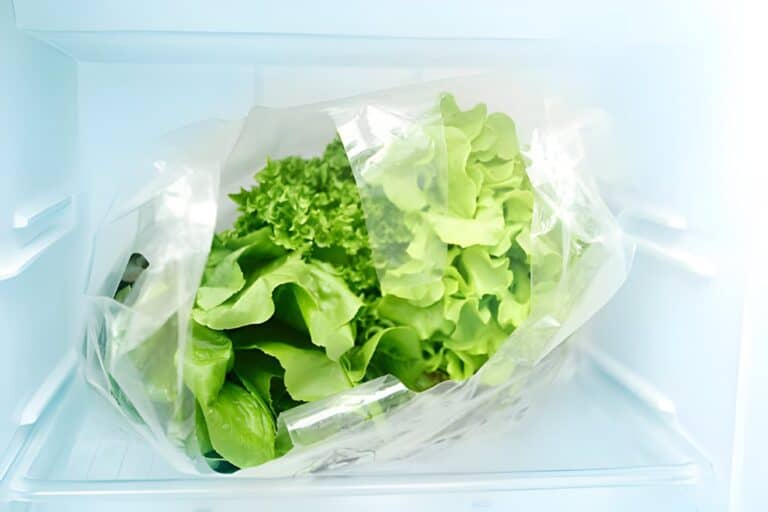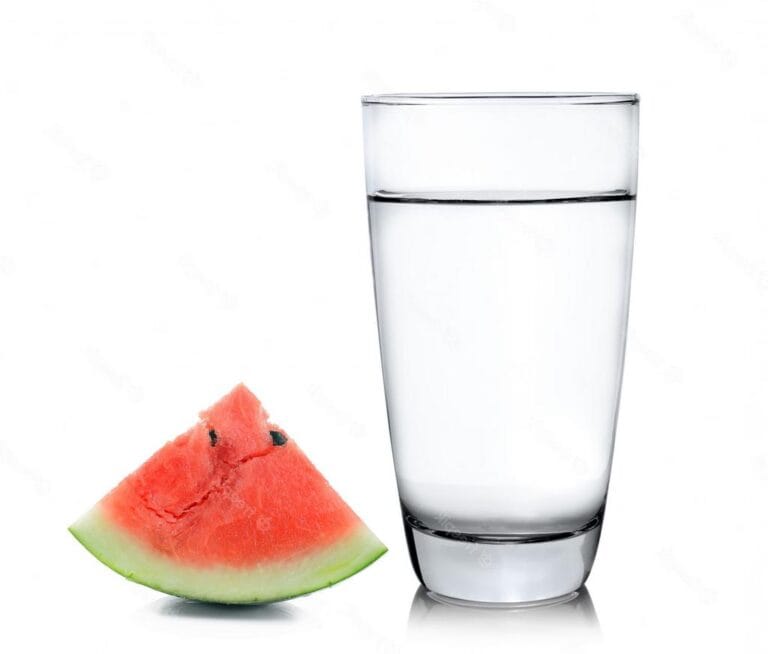Can You Eat Muscadine Skin? Is It Edible and Safe to Eat?

Muscadines, those richly hued grapes that dangle in clusters, present a deliciously mysterious appearance. With their luscious pulp and slightly tart taste, they beckon our taste buds. Yet, the skin’s texture might make you wonder if it’s an edible delight or better left behind. Beyond flavor, there’s the matter of safety. So, can you eat Muscadine skin without worrying?
Yes, it is safe to eat muscadine skin. The good news is that indulging in this grape’s skin is not only safe but also offers a unique burst of flavor and a wealth of nutritional benefits.
Join us as we dig into the juicy details, exploring the flavors, the nutrition, and the potential cautions that come with indulging in this tantalizing treat. Your next fruit-savvy decision might just hinge on the answer to this very question!
The Muscadine Grape: A Brief Introduction
Let’s begin our exploration of the delightful muscadine grape by pausing to marvel at the fruit as a whole. With the scientific name Vitis rotundifolia, these grapes are rooted in the southeastern United States. Setting them apart from the familiar European grapes are their robust skins and substantial seeds. These qualities, which contribute to their unique appeal, lay the foundation for our deeper examination of their edible exteriors.
In a captivating array of colors, encompassing rich purples, velvety blacks, shimmering bronzes, and even vivid greens, muscadine grapes showcase nature’s artistic palette.
Their taste dances between notes of sweetness and a tantalizing tartness, an exquisite symphony for the palate. This makes them a cherished choice for an array of creations – whether transformed into delightful jams and jellies, carefully crafted wines, or simply relished in their pure, unadorned splendor.
Nutritional Profile of Muscadine Skin
As you ponder whether muscadine skin is worthy of consumption, consider its nutritional makeup. This robust skin contains a treasure trove of vitamins, antioxidants, and other beneficial compounds. The skin is where many of the grape’s healthful components reside, including resveratrol, a potent antioxidant associated with various health benefits.
Additionally, the skin is rich in dietary fiber, which contributes to digestive health. So, not only can you eat the skin, but doing so might actually enhance the nutritional value of your muscadine experience.
Muscadine grape skins are a nutritional powerhouse. They contain a range of vitamins, minerals, and beneficial plant compounds that can contribute to your overall well-being. Here’s a sneak peek at what you can find in these skins:
Vitamins and Minerals
| Nutrient | Amount per 100g of Muscadine Skin |
| Vitamin C | 6.8 mg |
| Vitamin K | 4.9 µg |
| Potassium | 199 mg |
| Fiber | 3.9 g |
To Eat or Not to Eat: Muscadine Skin Edibility Dilemma
The good news is that muscadine skin is indeed edible. In fact, the skin of these grapes is where a significant portion of their health benefits reside. The skin contains a wealth of antioxidants, including resveratrol and quercetin, which have been linked to heart health, immune system support, and even potential anti-cancer properties.
However, there are a couple of factors to consider. First, the skin can be a bit tough and chewy due to its thickness, especially in the larger varieties of muscadine grapes. Some people enjoy the textural contrast it brings to the overall experience, while others might find it less appealing.
Second, the taste of the skin might vary depending on the color of the grape. Some individuals might find the skin of darker muscadine grapes slightly bitter, while others appreciate the balance it adds to the overall flavor profile.
Do You Need to Peel Muscadine Grapes Before Eating?

No, you do not need to peel muscadine grapes before eating them. Muscadine grapes are often referred to as “slip-skin” grapes because the fleshy insides separate easily from the thick outer skin.
To eat muscadine grapes without the skin, simply squeeze the end of the grape away from the attachment site to the plant. The inside of the grape will come out through the little hole where it was attached to the vine. Ultimately, whether to eat the skin or not is a matter of personal preference.
Texture and Taste of Muscadine Skin
Muscadine grapes offer an exquisite dual experience, where the contrast between their skin and flesh takes center stage. The skin, uniquely different from the juicy interior, presents a pleasantly chewy texture that adds a layer of intrigue to each bite.
Imagine sinking your teeth into a muscadine grape—your palate encounters an intricate dance of sensations, as the tender skin yields beneath your bite, revealing the burst of juicy sweetness within. It’s a symphony of textures that unfolds with every nibble.
But texture isn’t the only player in this culinary theater; the taste of muscadine skin plays a crucial role too. As you relish each mouthful, your taste buds are treated to a harmonious blend of flavors. The grape’s inner sweetness intertwines with the subtle astringency of the skin, creating a captivating juxtaposition that keeps your senses engaged. This dual nature of flavors amplifies the overall enjoyment, making each nibble a dynamic and satisfying experience.
This unique combination of textures and tastes heightens the pleasure of indulging in this fruit, making it a delightful adventure for anyone seeking a flavorful and sensory-rich experience. Some people may not enjoy the taste or texture of the skin, but it is ultimately up to personal preference
Healthful Compounds
- Resveratrol: Known for its potential anti-inflammatory and heart-protective effects.
- Quercetin: An antioxidant that may help with allergies, inflammation, and blood pressure.
- Ellagic Acid: Suggested to have anti-cancer properties.
Eating the skin of muscadine grapes provides additional health benefits as it contains tannins, which are chemicals that contribute to the tartness and flavor of the grapes. The skin is also a rich source of antioxidants, dietary fiber, flavonoids, and other beneficial phytochemicals.
Related: Can You Eat Grapefruit Seeds?
Culinary Uses of Muscadine Skin
Muscadine skin’s distinct texture and flavor are not only palatable but also lend themselves to a myriad of culinary creations. In both traditional and contemporary kitchens, this unique skin has found its place.
From pies to preserves, muscadine skin is used to enhance both the taste and visual appeal of various dishes.
Imagine a vibrant jam where the flecks of skin provide bursts of color and flavor. Consider a chutney, where the skin’s texture balances the dish’s overall consistency. Whether eaten fresh, incorporated into recipes, or transformed into beverages like muscadine wine, the skin’s potential is undeniable.
Many Ways to Enjoy Muscadine Skin
If you’re ready to embrace the goodness of muscadine skin, here are some delectable ways to enjoy it:
- Fresh and Raw: The simplest method is to enjoy muscadine grapes just as they are – straight from the bunch. Embrace the unique texture and savor the burst of flavors that come from the skin and the juicy interior.
- Smoothies: Blend muscadine grapes, skin and all, into your favorite tropical fruit smoothie concoction. The skin’s nutrients will blend seamlessly, adding a nutritious punch to your drink.
- Jams and Jellies: If you’re feeling a bit adventurous in the kitchen, try making your own muscadine jam or jelly. The skin will break down during the cooking process, infusing your spread with flavor and nutrients.
- Wines: For adults looking for a sophisticated treat, muscadine skin is a key ingredient in some wines. The skin contributes to the wine’s color, flavor, and healthful compounds.
Is it Safe? Potential Concerns About Muscadine Skin
While muscadine skin is generally safe and edible, it’s essential to address potential concerns that might arise. One aspect to consider is pesticide residue. Like many fruits, muscadine grapes can be treated with pesticides during cultivation. To minimize any risk, it’s advisable to wash the grapes thoroughly before consumption.
Opting for organic varieties can also alleviate this concern for those who prioritize pesticide-free options. Additionally, if you have allergies to grapes or related fruits, it’s worth exercising caution, as consuming the skin might trigger reactions in sensitive individuals.
Conclusion
When it comes to the question of whether Muscadine skin is safe to eat, the answer is a definitive yes. The slightly thicker and chewier skin of this grape variety not only earns its place on your plate but also packs a punch of valuable nutrients that substantially contribute to your overall well-being. Muscadines, those clusters of richly hued grapes, are not just a delight for your taste buds but also a boon for your health.
Unveiling the edible parts of Muscadine grapes reveals that the skin is a hidden treasure of nutrition. Its texture, slightly distinct from the succulent pulp, adds a satisfying contrast that enhances your gastronomic journey. Beyond its unique mouthfeel, the skin hosts a medley of health benefits that shouldn’t be overlooked. Enriched with antioxidants, vitamins, and dietary fiber, the Muscadine skin complements the grape’s pulp in ways that elevate your dietary experience.
As you delve into the culinary realm, consider incorporating Muscadine skins into your recipes. Their vibrant color and rich flavor can lend depth to a variety of dishes, while their nutritional value boosts the health quotient of your creations. Whether you’re nibbling on these grapes as a snack or experimenting with innovative recipes, remember that Muscadine skin consumption is not just permissible, but also advantageous.
So, embark on your Muscadine adventure with confidence, relishing each bite and embracing the remarkable fusion of flavors and textures this exceptional fruit brings to your table. So go ahead, enjoy the whole grape – skin, seeds, and all!
FAQs on Muscadine Skin Edibility
How do you eat muscadine grapes?
Simply pluck a ripe muscadine grape from its cluster and enjoy it. You can eat them whole, including the skin and seeds, for a full burst of flavor and nutrition.
Can you make wine from muscadine grapes?
Absolutely. Muscadine grapes are commonly used to make delicious wines due to their unique flavor and high levels of natural sugars.
Are muscadines and scuppernongs the same thing?
Muscadines and scuppernongs are related, but they are not the same. Scuppernongs are a variety of muscadine grapes with a distinct bronze color.
What are the health benefits of muscadine grapes?
Muscadine grapes are rich in antioxidants like resveratrol and quercetin, which can support heart health, boost the immune system, and potentially offer anti-cancer benefits.
Can muscadine skin cause allergies or reactions?
While rare, some individuals might be sensitive to compounds in muscadine skin. If you’re trying them for the first time, start with a small amount to watch for any adverse reactions.
How should I wash muscadine grapes before eating?
To clean muscadine grapes, rinse them under cold water and gently rub to remove any dirt or residues. This ensures safe consumption.
Are there any recipes specifically designed to use muscadine skin?
Yes, you can find recipes for muscadine jam, jelly, and even wines that utilize the unique flavors and beneficial properties of the skin.






